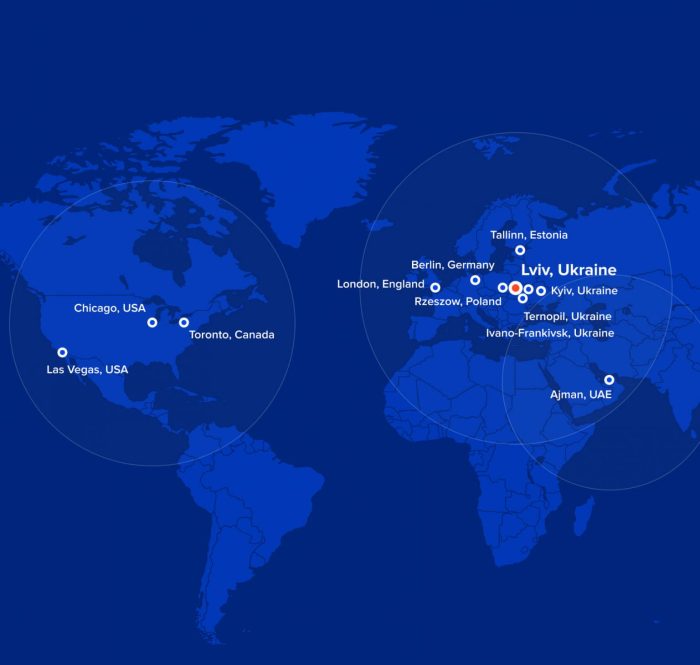In recent years, businesses have increasingly turned to software development teams to bring their ideas to life. One of the evolving trends in this space is nearshore software development. This article offers a detailed exploration of nearshore software development teams, outlining their benefits, challenges, and how they can fit into your business strategy.
What is Nearshore Software Development?: Nearshore Software Development Team
Nearshore software development refers to the practice of outsourcing software development tasks to companies in nearby countries. This approach offers a balance between the cost savings of offshore development and the convenience of local collaboration.
- Geographical Proximity: Nearshore teams are typically located in countries with similar time zones, facilitating real-time communication.
- Cultural Similarity: Working with teams in nearby regions often results in fewer cultural barriers, enhancing collaboration.
- Cost-Effectiveness: Nearshore development can be more affordable compared to local hiring while maintaining quality.
Benefits of Nearshore Software Development Teams
Choosing a nearshore software development team can provide several advantages:
1. Improved Communication
Due to time zone similarities, teams can communicate more effectively. This leads to quicker feedback loops and a more agile development process.
2. Cost Savings
Nearshore teams often provide high-quality services at a lower cost than local developers. This is particularly beneficial for startups and SMEs operating on tight budgets.
3. Access to Talent
Nearshore locations often boast a rich pool of skilled developers. Companies can tap into diverse expertise without the need to relocate talent.
4. Flexibility and Scalability
Working with a nearshore team allows companies to scale their development efforts up or down quickly based on project demands.
Challenges of Nearshore Software Development
While nearshore development offers numerous advantages, there are challenges to consider:
1. Time Zone Differences
Even though nearshore teams are in similar time zones, small discrepancies can still affect project timelines and communication.
2. Quality Control
Ensuring that the quality of work meets expectations can be challenging. It’s essential to establish clear guidelines and regularly monitor progress.
3. Legal and Compliance Issues
Different countries have varying legal standards and compliance requirements, which can complicate the process if not managed properly.
How to Choose the Right Nearshore Software Development Team
Selecting the right team is crucial for project success. Here are some tips to guide your decision:
- Assess Technical Skills: Ensure the team possesses the necessary technical expertise and experience for your project.
- Check References: Look for reviews and testimonials from previous clients to gauge reliability and quality of work.
- Evaluate Communication: Effective communication is key. Assess their responsiveness and willingness to engage in discussions.
- Understand Pricing Models: Be clear on pricing structures and what is included to avoid hidden costs later.
Best Practices for Working with Nearshore Teams
To maximize the effectiveness of your nearshore team, consider these best practices:
1. Set Clear Expectations
Clearly define project goals, timelines, and deliverables from the outset to align both teams effectively.
2. Foster Collaboration
Create a culture of collaboration through regular meetings, updates, and feedback sessions to build a strong working relationship.

Source: hatchworks.com
3. Use Project Management Tools
Utilize tools like Jira, Trello, or Asana to track progress, manage tasks, and keep everyone on the same page.
4. Encourage Continuous Learning
Promote an environment where team members can learn and adapt, which is especially important in the fast-evolving tech landscape.
Real-World Examples of Successful Nearshore Software Development
Many companies have successfully leveraged nearshore software development teams:
- Spotify: Utilized nearshore teams in Eastern Europe to support their rapid growth and product iterations.
- Slack: Partnered with nearshore developers in Latin America to enhance their platform’s functionality.
FAQs About Nearshore Software Development Teams
1. What are the main advantages of nearshore development compared to offshore?
Nearshore development offers better communication due to time zone alignment, cultural similarities, and often cheaper costs while maintaining quality.
2. How can I ensure the quality of work from a nearshore team?
Establish clear project guidelines, conduct regular check-ins, and use project management tools to monitor quality and progress.

Source: eleks.com
3. What are the common countries used for nearshore development?
Common nearshore locations include Mexico, Brazil, and various Eastern European countries like Poland and Ukraine.
4. How do I overcome language barriers in nearshore development?, Nearshore software development team
Ensure that team members have a good command of the common business language (typically English), and consider hiring bilingual project managers if necessary.
5. Can I scale my nearshore team as my project grows?
Yes, one of the benefits of nearshore development is the flexibility to easily scale your team up or down based on project needs.
Conclusion
Nearshore software development teams can be a valuable asset for businesses seeking efficient and cost-effective solutions. By understanding their benefits, challenges, and best practices, companies can harness the power of nearshore development to drive innovation and growth. If you’re considering a nearshore partner, take the time to choose wisely, and set the stage for a successful collaboration.
For more information or to discuss your specific needs, feel free to contact us today!
Question Bank
What is a nearshore software development team?
A nearshore software development team refers to a group of professionals located in a nearby country who collaborate on software projects, typically sharing similar time zones and cultural similarities.
How does a nearshore team differ from an offshore team?
Nearshore teams are located in countries that are geographically closer, leading to easier communication and collaboration compared to offshore teams, which are usually situated in more distant regions.
What are the main benefits of using a nearshore software development team?
The main benefits include cost efficiency, cultural alignment, improved communication, and the ability to easily manage the team due to similar time zones.
What types of projects are best suited for nearshore development?
Nearshore development is ideal for projects requiring real-time collaboration, ongoing support, and those with evolving requirements that benefit from close communication between teams.
How can companies ensure successful collaboration with nearshore teams?
Companies can ensure success by establishing clear communication channels, setting defined goals and expectations, and fostering a collaborative culture that values input from both teams.
